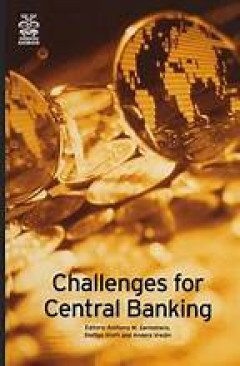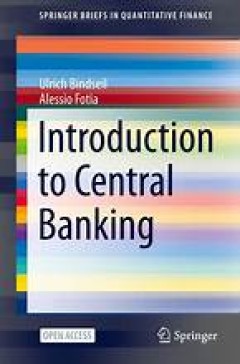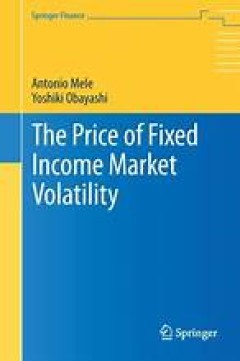Filter by

Challenges for Central Banking
It may be possible to claim that, generally speaking, central banks around the world have never before held such a central and well-respected position in their respective countries as they hold now. Their tasks seem to be reasona bly well defined and the mandate given to them to guarantee price stability has so far worked more successfully than was perhaps expected. Inflation is lower than it…
- Edition
- 1
- ISBN/ISSN
- 978-1-4757-3306-8
- Collation
- Bisnis
- Series Title
- -
- Call Number
- 650

Introduction to Central Banking
This open access book gives a concise introduction to the practical implementation of monetary policy by modern central banks. It describes the conventional instruments used in advanced economies and the unconventional instruments that have been widely adopted since the financial crisis of 2007–2008. Illuminating the role of central banks in ensuring financial stability and as last resort len…
- Edition
- 1
- ISBN/ISSN
- 978-3-030-70884-9
- Collation
- Banking
- Series Title
- SpringerBriefs in Quantitative Finance
- Call Number
- 332

The Price of Fixed Income Market Volatility
Fixed income volatility and equity volatility evolve heterogeneously over time, co-moving disproportionately during periods of global imbalances and each reacting to events of different nature. While the methodology for options-based "model-free" pricing of equity volatility has been known for some time, little is known about analogous methodologies for pricing various fixed income volatilities…
- Edition
- 1
- ISBN/ISSN
- 978-3-319-26523-0
- Collation
- Manajemen
- Series Title
- Springer Finance
- Call Number
- 658

Evolution of Central Banking?
The book analyses the establishment of De Nederlandsche Bank and its early development as a case study to test competing theories on the historical development of central banking. It is shown that the establishment of DNB can be explained by both the fiscal theory and the financial stability theory. Later development makes clear that the financial stability role of DNB prevailed. DNB´s bank no…
- Edition
- 1
- ISBN/ISSN
- 978-3-319-10617-5
- Collation
- -
- Series Title
- XV, 170 14 illustrations in colour ,
- Call Number
- -

The Financial Crisis
This book brings together a good mix of academics and practitioners for a discussion that focuses on how to change financial practice and the academic field of finance in order to understand the current financial crisis and deal with future turbulent financial times. The volume is based on contributions by prominent academics and practitioners from Europe, Asia and the USA. The book contains se…
- Edition
- 1
- ISBN/ISSN
- 978-3-319-20588-5
- Collation
- XI, 175, 3 b/w illustrations, 22 illustrations in colour
- Series Title
- -
- Call Number
- -
 Computer Science, Information & General Works
Computer Science, Information & General Works  Philosophy & Psychology
Philosophy & Psychology  Religion
Religion  Social Sciences
Social Sciences  Language
Language  Pure Science
Pure Science  Applied Sciences
Applied Sciences  Art & Recreation
Art & Recreation  Literature
Literature  History & Geography
History & Geography